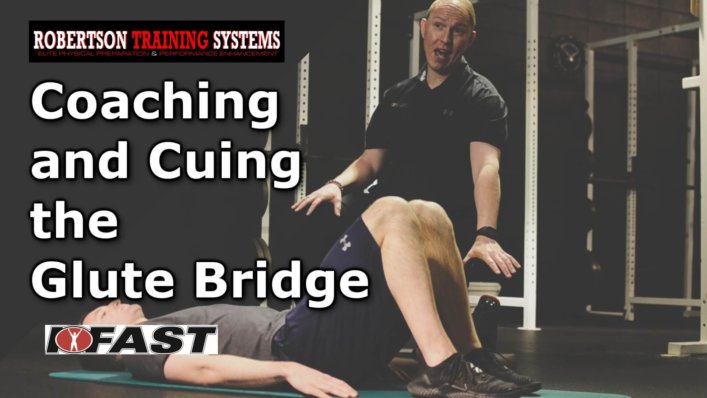One of my favorite books as a young coach was Muscles: Testing and Function by Florence Kendall.
It’s the book that really got me thinking about posture, alignment, and movement quality – not just moving maximal weights.
When assessing the glutes, one of the tests I used for years was a prone hip extension test: Have a client/athlete lie face down on a table, bend their knee to 90 degrees, and have them lift their thigh to see what muscles turn on first.
After performing this test a couple hundred times, I kept seeing people use their back extensors first – NOT their hip extensors.
As such, the glute bridge became one of my go-to exercises to cure this “glute amnesia” (as we liked to call it back in the day).
And while I still use the glute bridge in my programs, the way I coach and cue it today is vastly different than I did way back in 2003.
In this short video, I show you the exact set-up and cues I use nowadays to get someone doing the glute bridge and actually feeling their glutes!
Once you watch the video, here are a few things to make sure you’re coaching and cuing:
- Cue the exhale to set position. Make sure the ribs are down and the back is flat before starting the movement.
- Keep the abs engaged. It’s imperative that the abs are on to help control the lower back and pelvis. I like to remind my clients and athletes to “keep the belt buckle up.”
- Make sure to use your glutes! I always tell people I don’t care about range of motion initially – just make sure you’re keeping the abs engaged and working on hip (versus back) extension.
The glute bridge is an awesome exercise, and coaching/cuing it in this fashion will really take it to the next level.
Enjoy!
All the best,
MR

